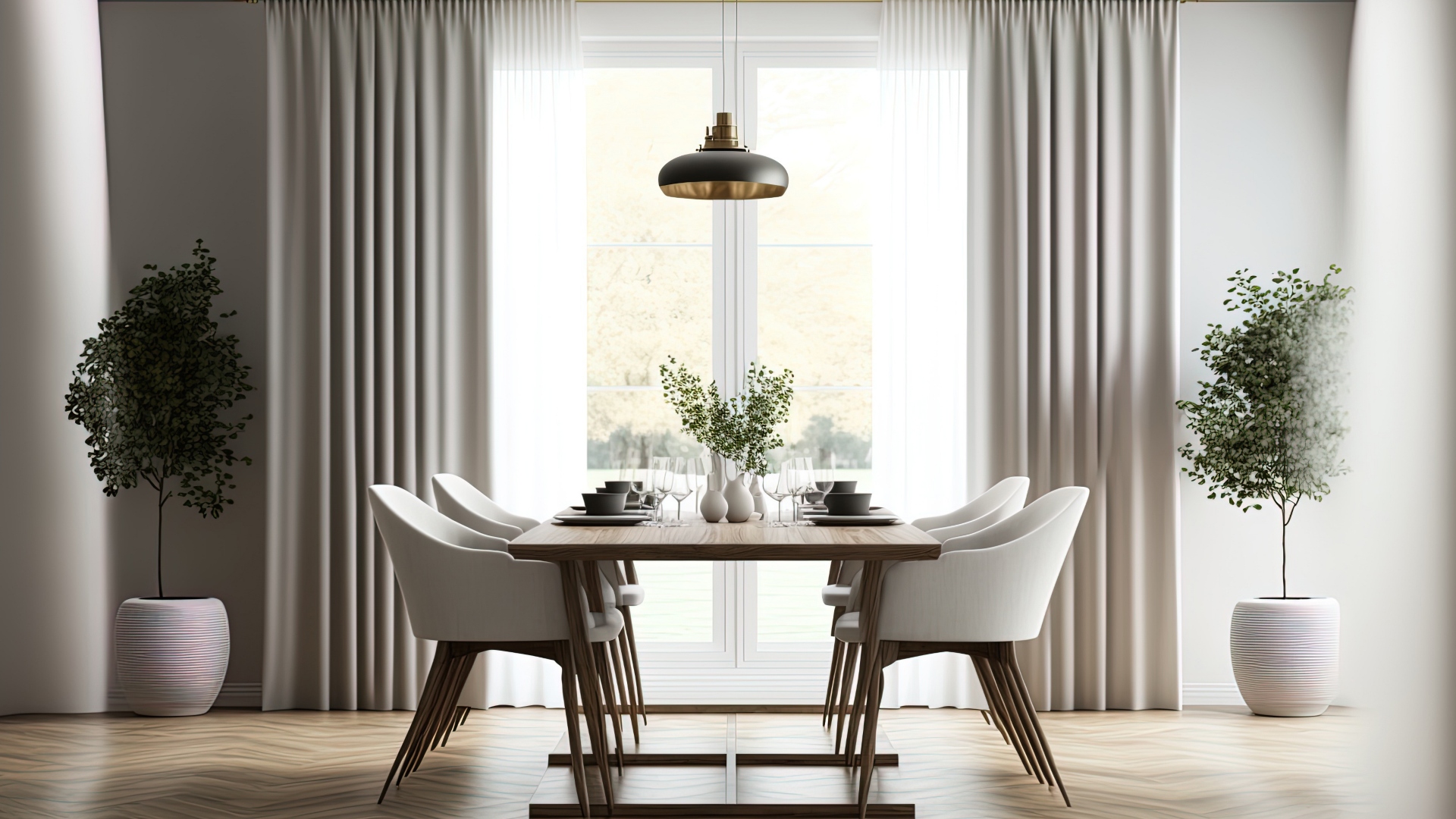Imagine stepping inside your contemporary home. To your left, a sleek and inviting dining table beckons, embodying the promise of shared meals, stories, and experiences. It’s more than just a dining spot—it’s a communal space, a stage upon which the scenes of everyday life unfold.
The role of dining tables in homes today has transcended the traditional. Far from merely a place to dine, it’s a versatile platform fostering connection, conversation, and creativity. A space initially reserved for meals has bloomed into a hub of varied activities. The dining table encapsulates the essence of home—a pivotal point in forming communal areas.
But how did this transformation occur, and what does it signify for dwellers of modern homes? Here’s a deep dive into the dining table’s multifaceted role.
An Extension Of The Living Room
In many homes, the dining table serves as an extension of the living room. It’s a gathering point for families and friends, a space that fuels conversation, collaboration, and connection. Amid the evolution of home aesthetics, Scandinavian dining tables, with their minimalist design and clean lines, have gained popularity. Their subtle yet stylish presence complements contemporary décor while preserving the warmth of communal spaces.
Beyond aesthetics, Scandinavian dining tables provide practicality. Their unobtrusive, sleek design harmonizes with the room, enabling the table to transition from a dining spot into a hub for hobbies or relaxation—a versatile cornerstone of your home.
The Culinary Showplace
At the heart of your home, the dining table serves as a culinary showplace. Here, meals transform into experiences, fostering an appreciation for cooking and eating and reinforcing the dining table as a platform for shared experiences and exploration of tastes.
When choosing a dining table that suits your culinary adventures, consider these factors:
- Material
A sturdy, heat-resistant material is ideal for withstanding hot dishes straight from the oven. Wood can be a good choice, but it should be well-sealed to avoid damage from spills. Glass tables are stylish and easy to clean but may show smudges and fingerprints more readily.
- Size
The size of the table should accommodate your serving style. A larger table may be necessary if you favour family-style meals with dishes placed in the center for everyone to share. For plated dinners, a smaller table might suffice.
- Shape
The shape of the table can influence your dining experience. Round tables encourage conversation, as everyone can see and speak with each other easily. Rectangular tables can accommodate more people and are better suited for larger dining spaces and bigger families.
- Features
Some tables have features like extendable sections or leaves, which can be beneficial if you frequently host large gatherings. For smaller, more intimate meals, these can be stowed away.
- Aesthetics
A table with a centrepiece can create an engaging visual narrative for your culinary delights. The table’s style, colour, and design should complement your home’s décor and reflect your personal taste.
These tips can guide you in choosing a dining table that fits your space and enhances your dining and culinary experience.
The Center Of Celebrations
In your home, the dining table becomes the epicentre of celebrations. From birthday dinners and holiday feasts to romantic meals for two, pivotal moments transpire around this communal fixture. It’s more than just a platform for food—a symbol of unity.
The type of dining table you select can shape these celebrations. For example, an extendable table ensures room for everyone at your gatherings.
The Work-From-Home Station
With the rise of remote work, dining tables have evolved into makeshift workstations. Offering ample space for laptops, documents, and your essential cup of coffee, it’s an ideal spot for productivity. Working at the dining table provides a reprieve from the solitude of a dedicated home office, keeping you in sync with the energy of your household.
Still, it’s crucial to prioritize comfort and ergonomics. An adjustable chair can offset the height of a dining table, while a cushioned pad can prevent wrist strain. With the right setup, your dining table can transform into a comfortable workspace without compromising productivity.
The Instigator Of Innovation
Seemingly a simple piece of furniture, the dining table can be an instigator of innovation—a platform for crafting, a brainstorming spot, or the birthplace of the next big idea. It’s a space that kindles creativity and facilitates the exchange of ideas, promoting communal innovation.
The type of dining table you choose can significantly influence this dynamic. A spacious table invites sprawling projects and group collaboration. Additionally, a surface that’s easy to clean promotes artistic exploration without fear of stains or damage.
In Conclusion
The role of the dining table in contemporary homes is multi-dimensional and significant. It’s an extension of the living room, a workspace, the epicentre of celebrations, a culinary stage, a catalyst for innovation, and a treasury of shared memories and conversations.
Far from being a static piece of furniture, it’s a dynamic element that shapes the rhythms and narratives of home life. As its role evolves, the dining table reveals insights into how modern families live, work, celebrate, innovate, remember, and connect, casting this humble piece of furniture in a whole new light.

































